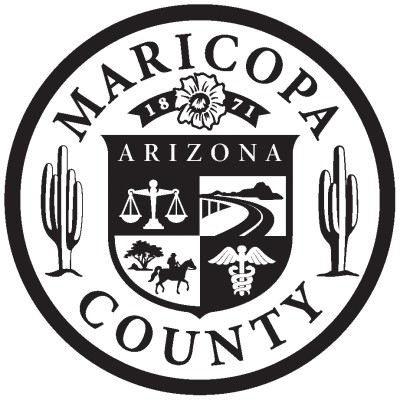The Crucible of Choices: Voter Dynamics and Drug Dangers in America
October 12, 2024, 10:05 pm
In the landscape of American politics, the 2024 presidential election looms large. Voter dynamics are shifting like sand in the wind. Key demographics are becoming the battlegrounds. Urban centers like Detroit, Charlotte, and Atlanta are the heartbeats of Democratic hopes. These cities are densely populated, and their votes can sway entire states. In 2020, they delivered over two-thirds of their ballots for Joe Biden. This trend is crucial for Kamala Harris as she prepares to face Donald Trump.
The suburbs are the new frontier. Counties surrounding Milwaukee and Philadelphia are pivotal. Known as the “WOW” counties—Washington, Ozaukee, and Waukesha—these areas have historically leaned Republican. Yet, they are inching left. Republican candidates once dominated here, but margins are tightening. A strong turnout in these suburbs could spell doom for Trump.
In Pennsylvania, the collar counties of Bucks, Montgomery, Chester, and Delaware are wealthy and historically Republican. Yet, they have been shifting left for decades. The stakes are high. A few thousand votes can tip the scales in battleground states.
Arizona and Nevada present unique challenges. Maricopa County, home to Phoenix, is a giant. It accounted for over 60% of Arizona's votes in 2020. Similarly, Clark County in Nevada, home to Las Vegas, is a powerhouse. Biden's narrow victories in these counties were enough to secure statewide wins. A few votes can change everything.
Natural disasters complicate the picture. Hurricane Helene recently battered North Carolina, leaving uncertainty in its wake. The storm's impact could sway voters in crucial counties. Historically, North Carolina has been a tight race. Trump won by just over 74,000 votes in 2020. The storm's aftermath may influence turnout and sentiment.
Across the battleground states, ten counties flipped from Trump to Biden between 2016 and 2020. These counties, while small, are bellwethers. They can signal which way the wind is blowing. In Wisconsin, a mere 20,000 votes decided the outcome in both elections. The early counting counties will provide clues on election night. New Hanover and Nash in North Carolina will be among the first to report.
Meanwhile, America faces another crisis—an epidemic of drug-related deaths. The combination of extreme heat and methamphetamine use is a deadly mix. This summer was the hottest on record. Phoenix and Las Vegas sweltered under relentless heat. In Maricopa County, two-thirds of heat-related deaths involved drugs. Meth was a primary culprit.
The danger escalates in the Southwest. Meth overdoses have surged since the mid-2000s. In Pima County, a quarter of heat-related deaths this year involved meth. The numbers are staggering. The U.S. Drug Enforcement Administration reports that stimulants now account for 31% of drug-related deaths. Over 17,000 people died from stimulant overdoses in the first half of 2023 alone.
The physiological effects of meth complicate heat management. Users cannot simply shed the “meth jacket.” Their bodies struggle to cope with extreme temperatures. Emergency rooms are filling with heat stroke patients, many of whom have used meth. The connection is clear.
Phoenix, a hub for meth distribution, is at the center of this crisis. The city is a source for smuggled drugs, making it a target for dealers. The cheap price of meth attracts vulnerable populations, particularly the homeless. Drug dealers exploit these individuals, creating a cycle of addiction and despair.
Efforts to combat this crisis are underway. Public health officials are distributing information about the risks of drug use in extreme heat. Yet, reaching those most at risk is challenging. Many users feel unwelcome in cooling centers. A more inclusive approach is needed—one that allows users to seek refuge without judgment.
The intersection of politics and public health is stark. Voter turnout and drug-related deaths are both influenced by socioeconomic factors. Communities grappling with addiction often have lower voter engagement. This disengagement can skew election outcomes. Addressing these issues requires a holistic approach.
As the election approaches, candidates must navigate these complex dynamics. Voter turnout in key areas will be critical. Simultaneously, the public health crisis demands attention. The stakes are high. Lives are on the line.
In this crucible of choices, America stands at a crossroads. The decisions made in the coming months will shape the future. Voter engagement and public health are intertwined. The outcome of the election may hinge on how well these issues are addressed. The road ahead is fraught with challenges, but it is also filled with opportunities for change. The question remains: will America rise to meet them?
The suburbs are the new frontier. Counties surrounding Milwaukee and Philadelphia are pivotal. Known as the “WOW” counties—Washington, Ozaukee, and Waukesha—these areas have historically leaned Republican. Yet, they are inching left. Republican candidates once dominated here, but margins are tightening. A strong turnout in these suburbs could spell doom for Trump.
In Pennsylvania, the collar counties of Bucks, Montgomery, Chester, and Delaware are wealthy and historically Republican. Yet, they have been shifting left for decades. The stakes are high. A few thousand votes can tip the scales in battleground states.
Arizona and Nevada present unique challenges. Maricopa County, home to Phoenix, is a giant. It accounted for over 60% of Arizona's votes in 2020. Similarly, Clark County in Nevada, home to Las Vegas, is a powerhouse. Biden's narrow victories in these counties were enough to secure statewide wins. A few votes can change everything.
Natural disasters complicate the picture. Hurricane Helene recently battered North Carolina, leaving uncertainty in its wake. The storm's impact could sway voters in crucial counties. Historically, North Carolina has been a tight race. Trump won by just over 74,000 votes in 2020. The storm's aftermath may influence turnout and sentiment.
Across the battleground states, ten counties flipped from Trump to Biden between 2016 and 2020. These counties, while small, are bellwethers. They can signal which way the wind is blowing. In Wisconsin, a mere 20,000 votes decided the outcome in both elections. The early counting counties will provide clues on election night. New Hanover and Nash in North Carolina will be among the first to report.
Meanwhile, America faces another crisis—an epidemic of drug-related deaths. The combination of extreme heat and methamphetamine use is a deadly mix. This summer was the hottest on record. Phoenix and Las Vegas sweltered under relentless heat. In Maricopa County, two-thirds of heat-related deaths involved drugs. Meth was a primary culprit.
The danger escalates in the Southwest. Meth overdoses have surged since the mid-2000s. In Pima County, a quarter of heat-related deaths this year involved meth. The numbers are staggering. The U.S. Drug Enforcement Administration reports that stimulants now account for 31% of drug-related deaths. Over 17,000 people died from stimulant overdoses in the first half of 2023 alone.
The physiological effects of meth complicate heat management. Users cannot simply shed the “meth jacket.” Their bodies struggle to cope with extreme temperatures. Emergency rooms are filling with heat stroke patients, many of whom have used meth. The connection is clear.
Phoenix, a hub for meth distribution, is at the center of this crisis. The city is a source for smuggled drugs, making it a target for dealers. The cheap price of meth attracts vulnerable populations, particularly the homeless. Drug dealers exploit these individuals, creating a cycle of addiction and despair.
Efforts to combat this crisis are underway. Public health officials are distributing information about the risks of drug use in extreme heat. Yet, reaching those most at risk is challenging. Many users feel unwelcome in cooling centers. A more inclusive approach is needed—one that allows users to seek refuge without judgment.
The intersection of politics and public health is stark. Voter turnout and drug-related deaths are both influenced by socioeconomic factors. Communities grappling with addiction often have lower voter engagement. This disengagement can skew election outcomes. Addressing these issues requires a holistic approach.
As the election approaches, candidates must navigate these complex dynamics. Voter turnout in key areas will be critical. Simultaneously, the public health crisis demands attention. The stakes are high. Lives are on the line.
In this crucible of choices, America stands at a crossroads. The decisions made in the coming months will shape the future. Voter engagement and public health are intertwined. The outcome of the election may hinge on how well these issues are addressed. The road ahead is fraught with challenges, but it is also filled with opportunities for change. The question remains: will America rise to meet them?

